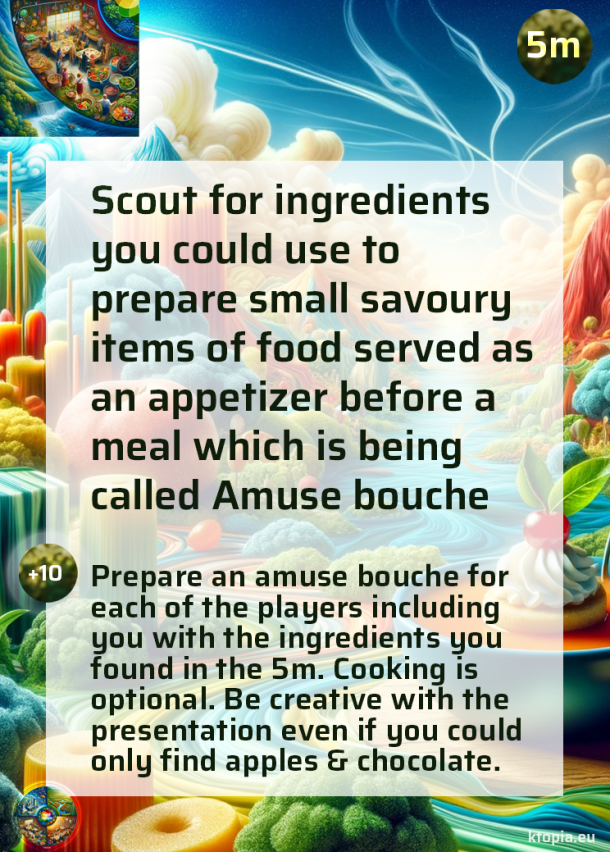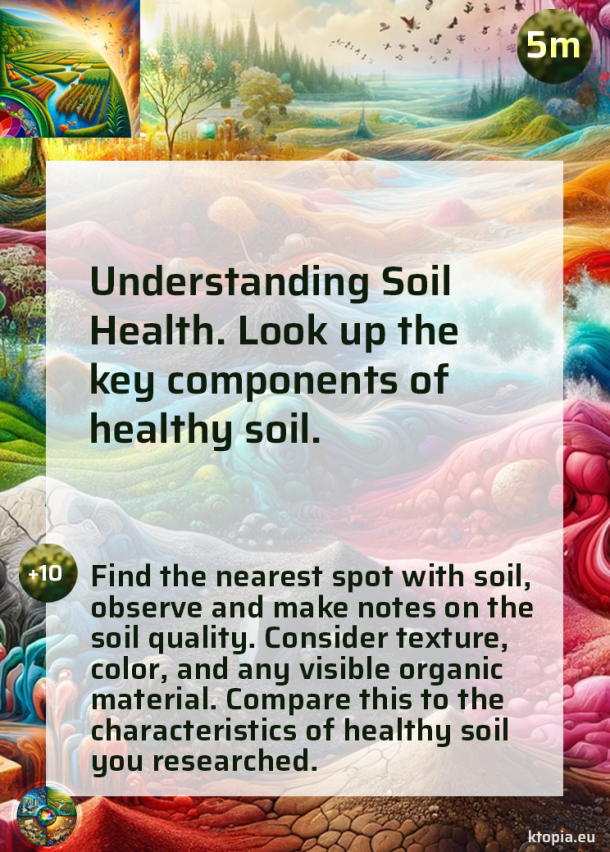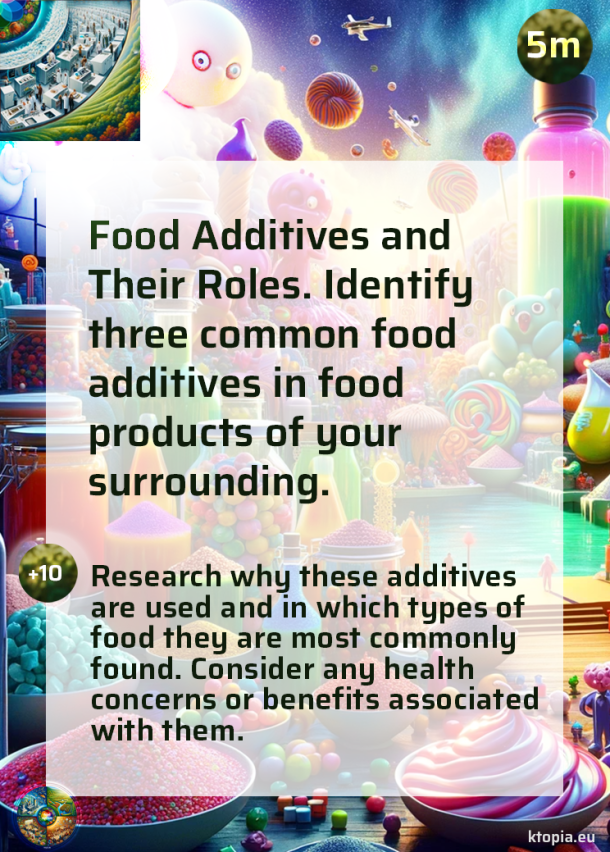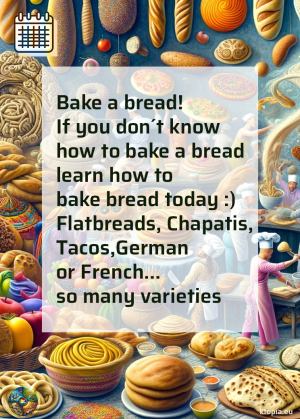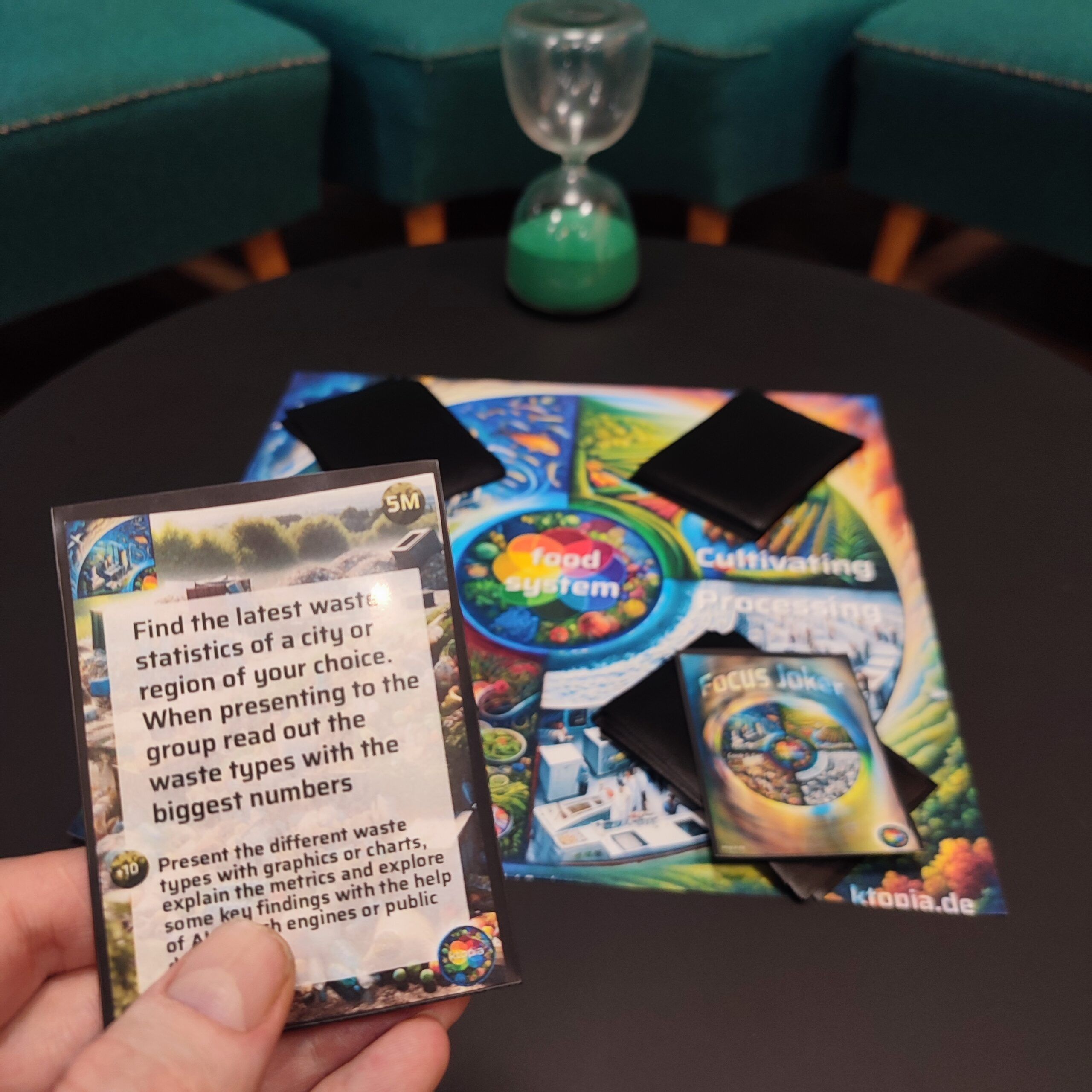
Food System
the board & card game
-
free and open-source game for 1-4 players
-
Players explore four distinct and interconnected quadrants of “Food Systems” through Research & Action Quest cards.
-
Players train practical skills in research, creativity, solution design, and presentation, while learning about interconnected food systems both in their region and around the world.
-
Game time is typically 40 minutes for normal matches (30 minutes for 2 players). A normal match consists of two rapid rounds.
-
Matches can be extended with additional rounds, and daily quest cards can be unlocked while progressing through the four quadrants of the food system over a period of time.
-
The game can be expanded with Booster Packs and Sets to cater to specific needs in settings such as preschools, high schools, universities, homes, open educational spaces, with friends, or focusing on specific themes.
-
An Augmented Reality (AR) Bot can be activated on the players’ smartphones without needing to install an app, simply by scanning the game board. This animated and entertaining bot helps players learn how to play the game.
rulebook v0.3 january 19th, 02024

We will provide the free download version of the game to print out at home or educational places soon. It contains all the PSD files and rulebooks to craft your version of the game.
Current status of Game Development
January 9th, 2024
updated: January 25th, 2024
Alpha Kit now available in our 0€ store to try it out.
Contains Game Board, Cards, Focus Visor, Scoresheet
and Card-Maker.
Game Elements

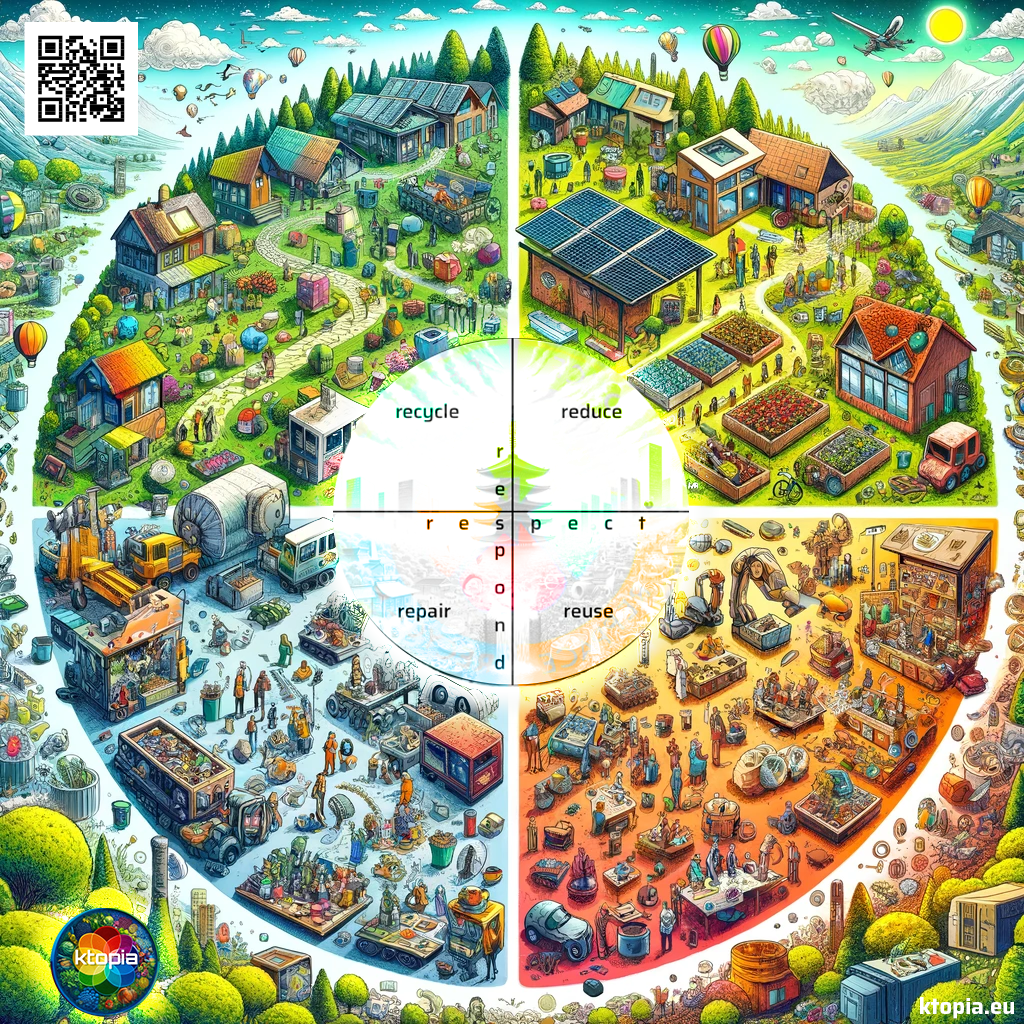
The Game Board
4 Food System Quadrants:
One, where it all grows. One, where it is being processed. One, where it is being cooked and eaten. And one, where all the waste goes.
Q1: Cultivating
Agriculture, Aquaculture, Horticulture, Permaculture… Big Farming, Home Gardening, Community Gardening. Indoor Growing..
You get the idea: Q1 is the Quadrant, where all the raw food ingredients grow. In soil & water, with seeds growing, supported by air, light and time..
Cultivation is everything that supports the growth of specific organisms in a shared, bio-diverse habitat.
Q2: Processing
This is the quadrant, where all the raw food ingredients go to be “processed”: changed or mixed with other ingredients into new food products and then packaged for transport.
The Wheat from the farmer that´s processed into flour for bred with a help of a mill is a simple example.
20 tons of tomatoes that go into processing, where they become de-hydrated into a pulverized form and mixed with additives like flavor enhancers, chemical components to keep the mixture dry, bind fats or enhance the kick with sugars is a more complex example of processing.
Q3: Cook & Eat
Well yeah. This one is easy. This is where we cook and eat 😀 . It is also the quadrant of Nutrition and Health.
At home, in Gastronomy, via delivery food, in cantines @ schools, universities and work places; in clinics and welfare spaces. At birth and funerals. Cooking & Eating + the culture around it is a global phenomena and connects us all in a bio diverse food web. It has been there since we had to eat and will be long with us since we have to eat.
Q4: Waste
This quadrant is also being called “The Wastelands”. An ugly place we might think, the least pretty of the 4.
And yet it is also full of components for re-cycling into new products depending on the waste types and practices.
R&A Quest cards
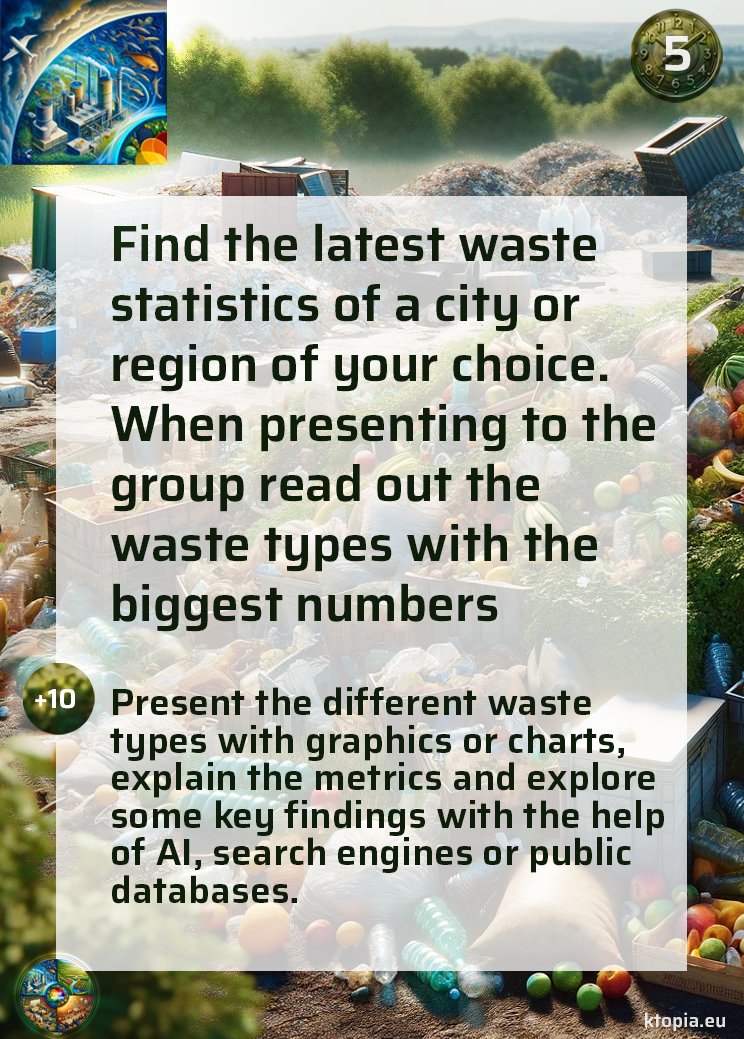
Research & Action cards take you on quests: tiny tasks and missions in different areas.
The top left corner indicates one of the 4 quadrants = quest type. Cultivation, Processing, Cook & Eat, Waste.
The top right corner indicates it´s basic time demand.
5=5 minutes. In round 2 the 5 minute card can be upgraded with the +10 to a 15 minute quest.
If you like the quest topic of your card and 5 minute quest, you can upgrade and extend your research with an additional 15 minutes in the next round.
strategic tips:
Especially well performed quest presentations and research efforts have more chances to receive additional points from other players.
With an upgrade you gain 5 additional minutes to really dig deep and shine with your quest presentation. (5 minutes 1st round + 15 minutes 2nd round = 2o minutes total for one quest) compared to one 5 minute quest card in round 1 and another 5+10 quest in the second round.
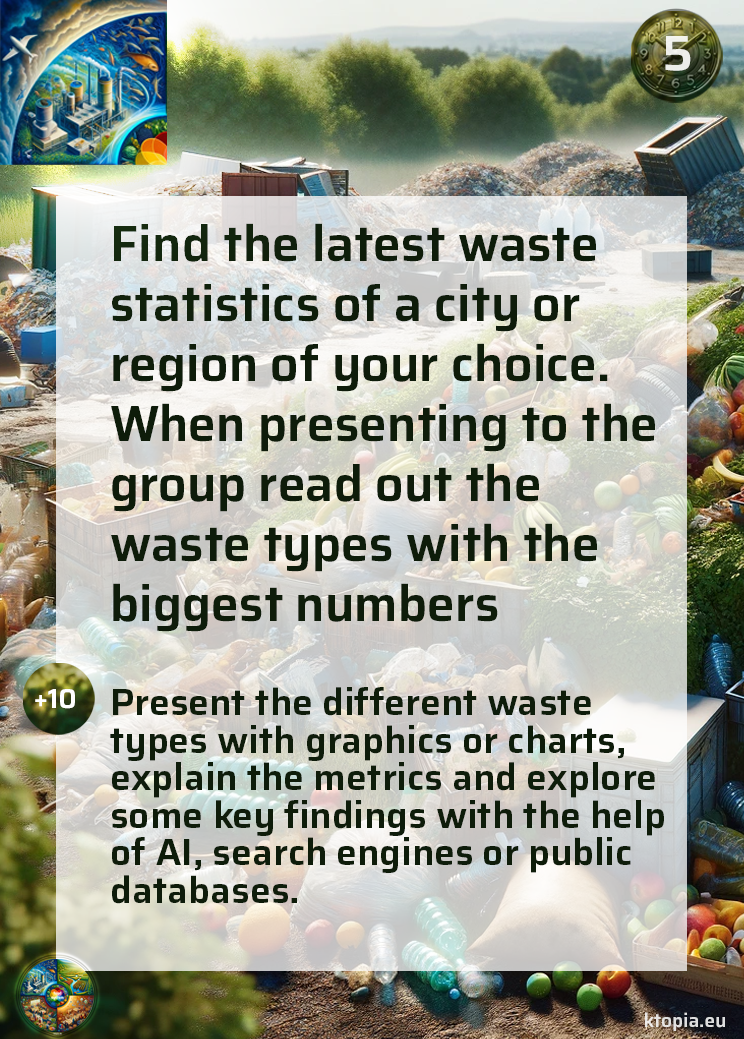
Some more example cards from each quadrant.
Click to see full size.
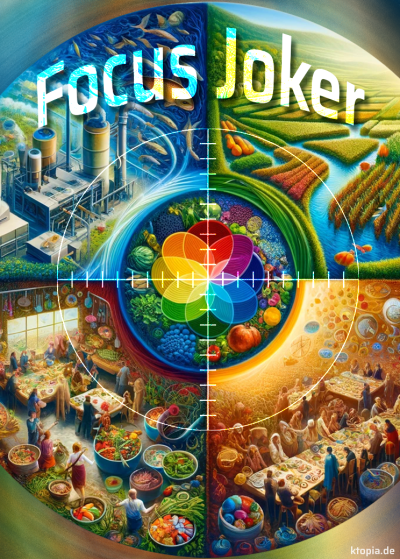
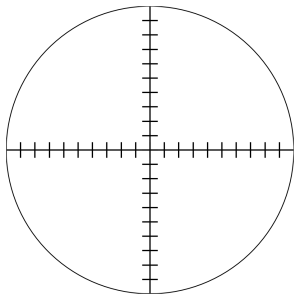
Focus Joker Card
Can be played once per normal Game during the second round instead of a regular card. You receive a visor focus + sheet to center on one food product and have to explore it along all 4 quadrants.
- Search for a food product in your surrounding and place it in the center. For real or in your mind if it is to big. For example: tomato ketchup
- On the top right (cultivation) list all the raw ingredients that seem to have an agricultural background. Tomatoes, etc. and continue clockwise
- On the bottom right (processing) list all the additives and chemical components added during the processing of the raw ingredients from the first quadrant. (Sugar, mononatrium glutamat, E405, glyceride, flavor enhancers, acids)
- Bottom left (Cook & Eat) imagine a couple food menus the product can be used in and data or guesses about the nutritional value of the food product and menu. How could the Tomato ketchup in our example have been created in a different way ?
- On the top left (Waste) list the waste components, waste types and recycability that came with the food product. (Plastic or glas bottle, aluminum tube, etc.
Advantage: If you play a joker this round you can give yourself a +1 during scoring phase after your presentation
This one comes in future version of the game. You probably saw 10 steps on the inner cross lines of the Joker Circle, reminding of binocular and being called the “Focus Visor”.
We currently develop a math model to plot a food product within the quadrants with more precise indicators. The x and y axis in the “Cultivation” quadrant for example define the transportation length from the place where it grows and has been harvested to processing or cooking. From where did it come from ? How far did it have to travel ? The y axis indicates the effort and energy we had to put into the growth of the product.
Both axis from 1 to 10 allow for subjective guess work and could be used for real data experiments. Where 1 in this example stands for “grown in my garden” on the x axis (distance traveled) and “low input need. Soil, Water, Light, time”. Or 10: Comes from very far way + Needs a lot of resources: Water, Chemical Fertilizer, etc.
Jee, this is getting to long. You´ll get the idea. All quadrants have different x and y axis labels. Waste for example one axis with “recycability grade”…this is where its gets complex and has been moved forward in the development roadmap for later versions of the game.
Game Card Expansions
Card packs & sets extend the Base Game with additional cards and can have a special theme & focus.
They are crafted by players and curated in our upcoming 0€-shop, home of the free download & craft coop products.
Booster Packs
Packs of a couple quest cards and Daily Cards focusing on a specific theme
Sets
Full, playable card sets with a specialized theme. For example: Primary school, High schools, Universities, family household, friends group or specific places and their services, spaces and equipment
The Score Sheets
1 player scoresheet with space for 6 matches and Daily Quests in one week + an overview in which quadrants you have gained experience through playing cards of that quadrant. Format A5 – two on 1 A4 side.
Space for Player Name, Image and additionals.
1 Highscore Board
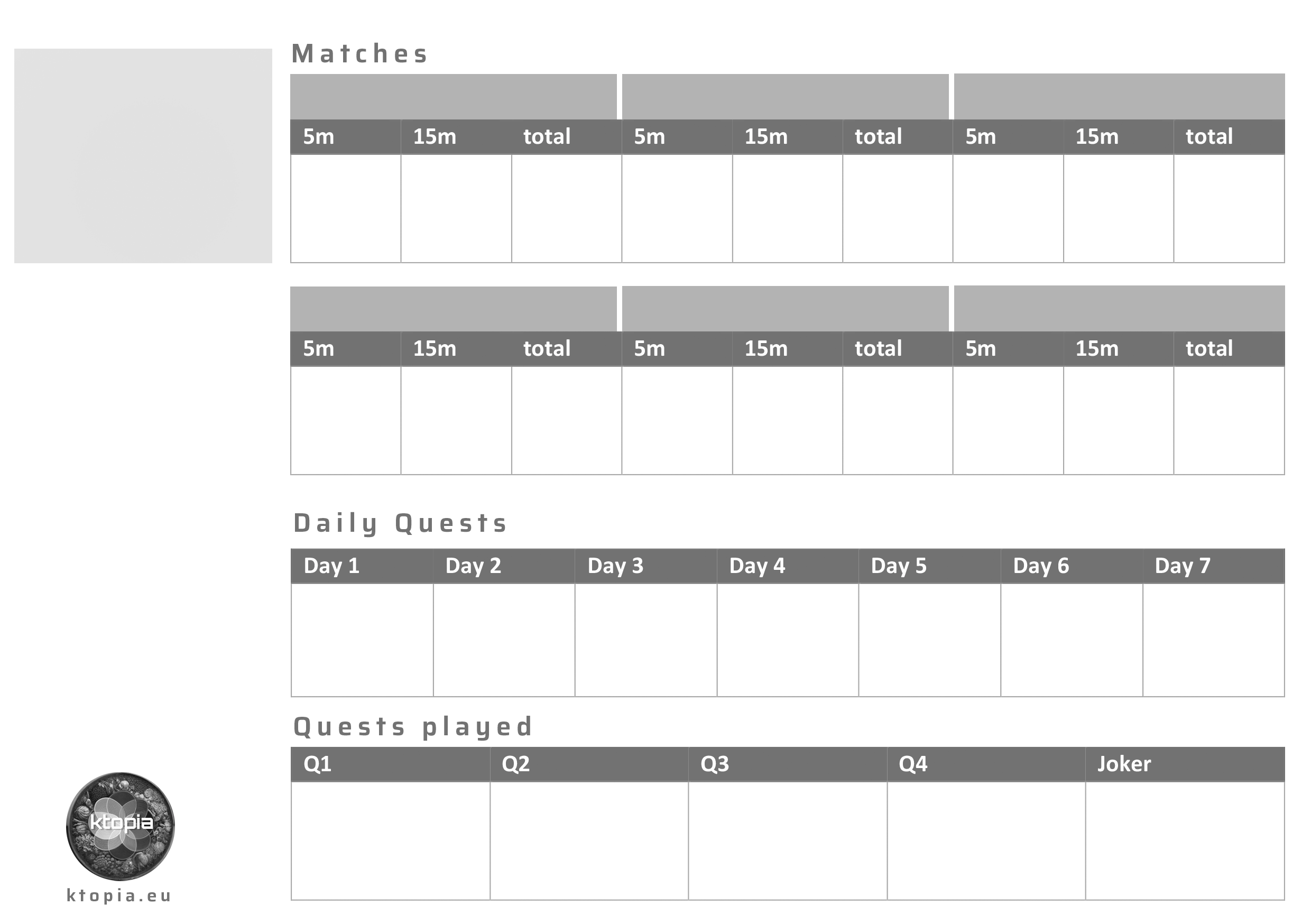
Gameplay & Rules
Players:
1-4
When played in group sessions (classes, youth center, etc.) more game sets can be printed out – for example 4 groups with 4 players each. Groups could even compete or cooperate if they have the same quest.
Match Time:
40 minutes 4 players
30 minutes 2 players. One 5 minute quest with a 1 minute presentation each player, one 15 minute quest with 3 minutes presentation time each.
Can be extended with more rounds and weekly quests..
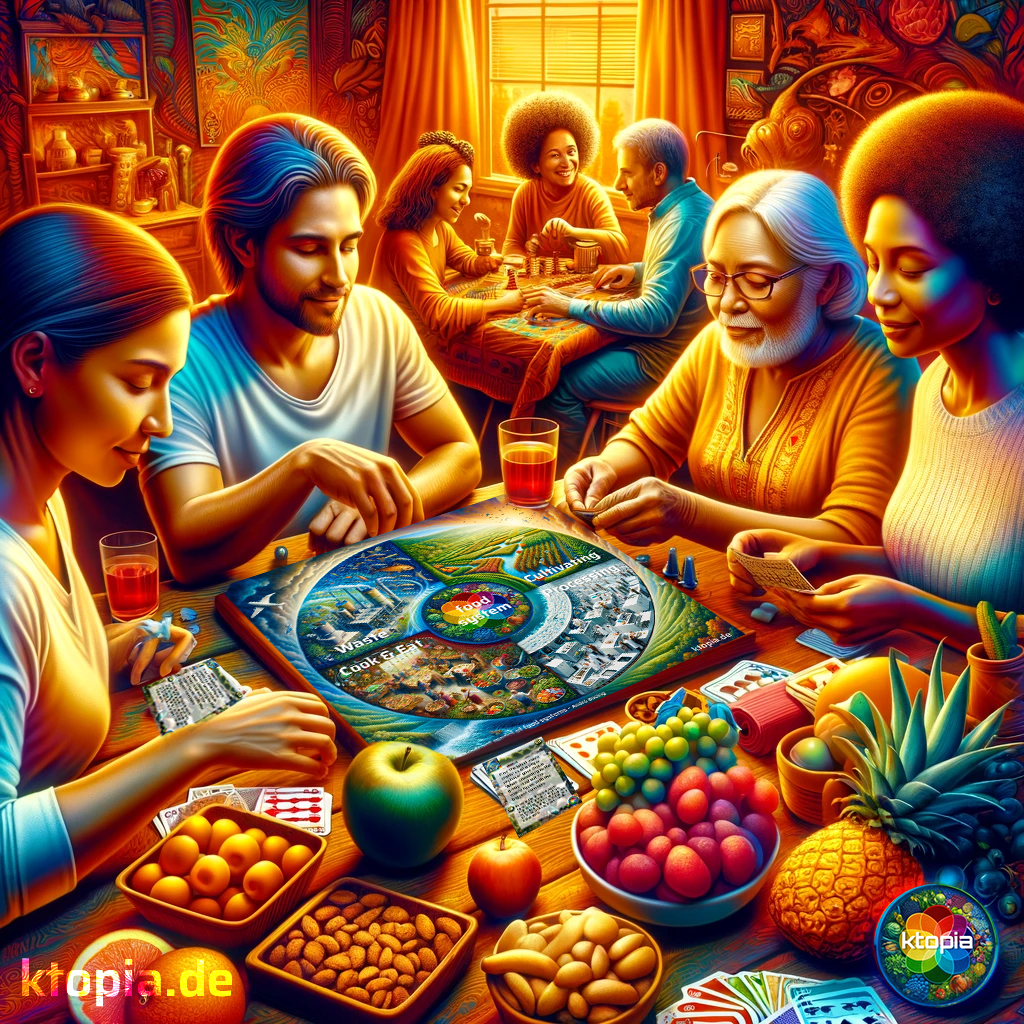
Preparation
you need:
-
the Gameboard
-
Food products. Naturally they should be around where the game is being played. If not, get some before the game
-
1 Card Deck = 4 staples of Quest cards sorted by Quadrant. 2 copies of each quest card
-
1 Focus Joker for each player
-
an empty bottle or pen for spinning
-
printed focus visor sheets
-
printed player score sheet
-
printed highscore sheet
-
Smartphone, tablets, Laptops or PC´s
connected to the Web for research
Decide who wants to play the role of the time keeper. It can be a player or moderator. As a time keeper you have to be very strict about keeping the 5 minute and 15 minute rounds + 1 minute and 3 minute presentation times. Have your smartphone or stopwatch and a super loud sound ready when the time is up.
Decide quickly who spins first (all players begin simultaneously anyway after all picked a card, so there is no game advantage in spinning first, just being the first spinner of the game -)
One Match consists of 2 rounds with a 5 minute quest and max. 1 minute presentation and a second round with a 15 minute quest time and max. 3 minute presentation.
round 1
– the 5 minute Quest
-
1
Spin the bottle
-
2
Pick a card from the deck in the quadrant, where the bottle stopped.
-
3
When all players have spinned and picked a quest card, the timekeeper starts the countdown.
All players now have 5 minutes to research the quest.
The +10 can be ignored in this round. -
4
When 2 players recognize, that they picked the same quest card, they can either compete, cooperate or ignore the coincidence. If cooperating you can present as a team during presentation phase.
-
5
All players present their findings and have 1 minute available each. After the presentations players can give other players a +1 if they think, the quest presentation has been solved or presented especially well. This is optional. If players don´t want to give +1 they can simply say nothing. If you played this quest as a coop team both players receive the same amount of points.
If players solved the quest, note 1 point in the 5 minute Quest row + additional +1 points from the other players
round 2
– the 15 minute Quest
-
1
Players decide if they want to upgrade their 5m Quest card to a 15m Quest with the additional +10 tasks
OR if they want to pick another card (now with the +10 upgrade automatically unlocked).
OR if they want to use their Focus Joker, which can be played once per match. -
2
Spin the bottle for players who did not upgrade to a 15m card, nor used their Focus Joker. Then pick another card from the quadrant the bottle stops in. Players who pick a new card could then use their Joker as an option before proceeding.
-
3
When all players upgraded or picked a new quest card or used the focus joker with it´s required food product, the countdown begins. All players now have 15 minutes to research the quest.
-
4
When 2 players recognize, that they picked the same quest card, they can either compete, cooperate or ignore the coincidence. If cooperating you can present as a team during presentation phase.
-
5
All players present their findings and have 3 minutes each. After the presentations players can give other players a +1 if they think, the quest presentation has been solved or presented especially well. Simply hold a thumbs up into the middle to indicate you give a +1 to another player. This is optional. If players don´t want to give +1 they simply do not put their thumb up.
If players solved the quest, note 3 points in the 15M Quest row + additional +1 points from the other players
All Players can now vote to play another 5+15 minute match, end the match or end the game.
-
If the game ends, the highscores are final
-
If you get together for another match some other time, the game is saved and just “on pause”- keep the highscore sheet save as well.
- Daily Quest cards unlock, if you continue the Game another time.
The Daily Quest Card
- Unlocks when players continue the game another time with more matches. Random pick. Tradable.
- max. 2 cards
- Each card can be played once a day
until next group match - Pick 2 random daily quest cards from the Daily Quest staple face down, then read them out to the group
- You can now trade with other players or keep your cards if you like during the TCG phase.
( Trade Card Game….;-) - Add 2 points per day and daily quest (max. 4) in your personal score sheet in the day row after successful completion.
- When you get together as a group again, present evidence of your Daily Quests (pictures, social media posts, creations, etc.)
- Other players can give you a +2, indicating with a “thumbs up” if they are impressed with your daily progress after presenting your daily results.
- before the new match, add all points from your daily quests to the current highscore sheet
Repeat playing Matches and Daily´s until the Game ends.
(it could as well take a whole month or longer ;)….
GL&HF
Good luck & have fun.
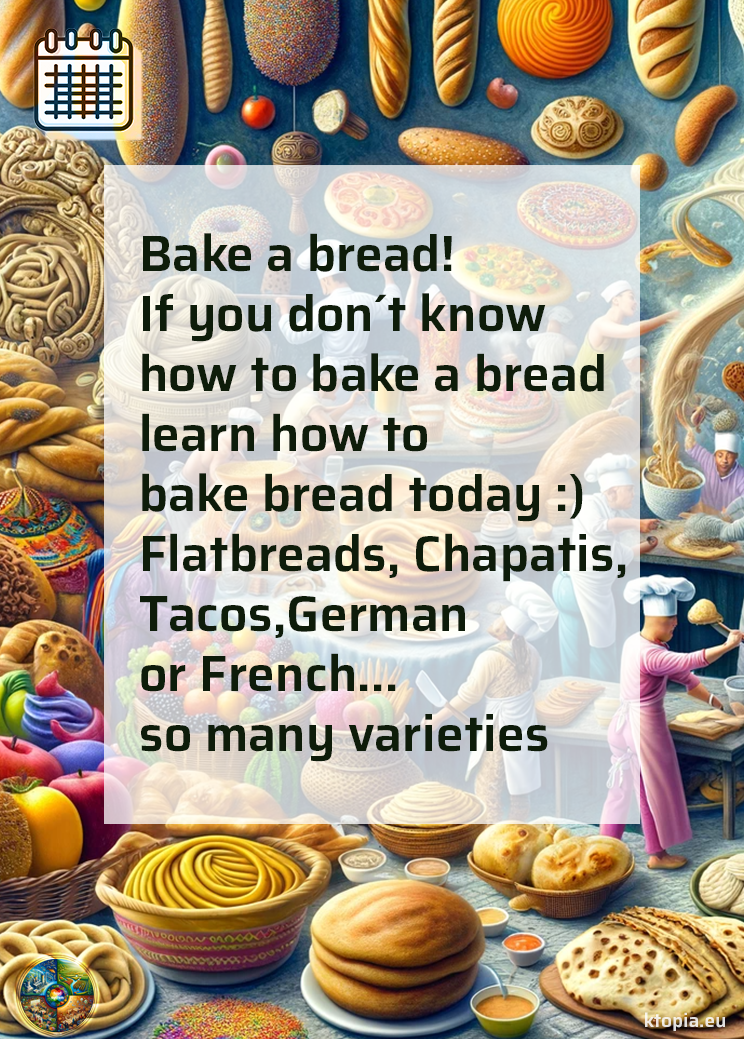
Crafting Additional cards, booster packs and sets…
in development
